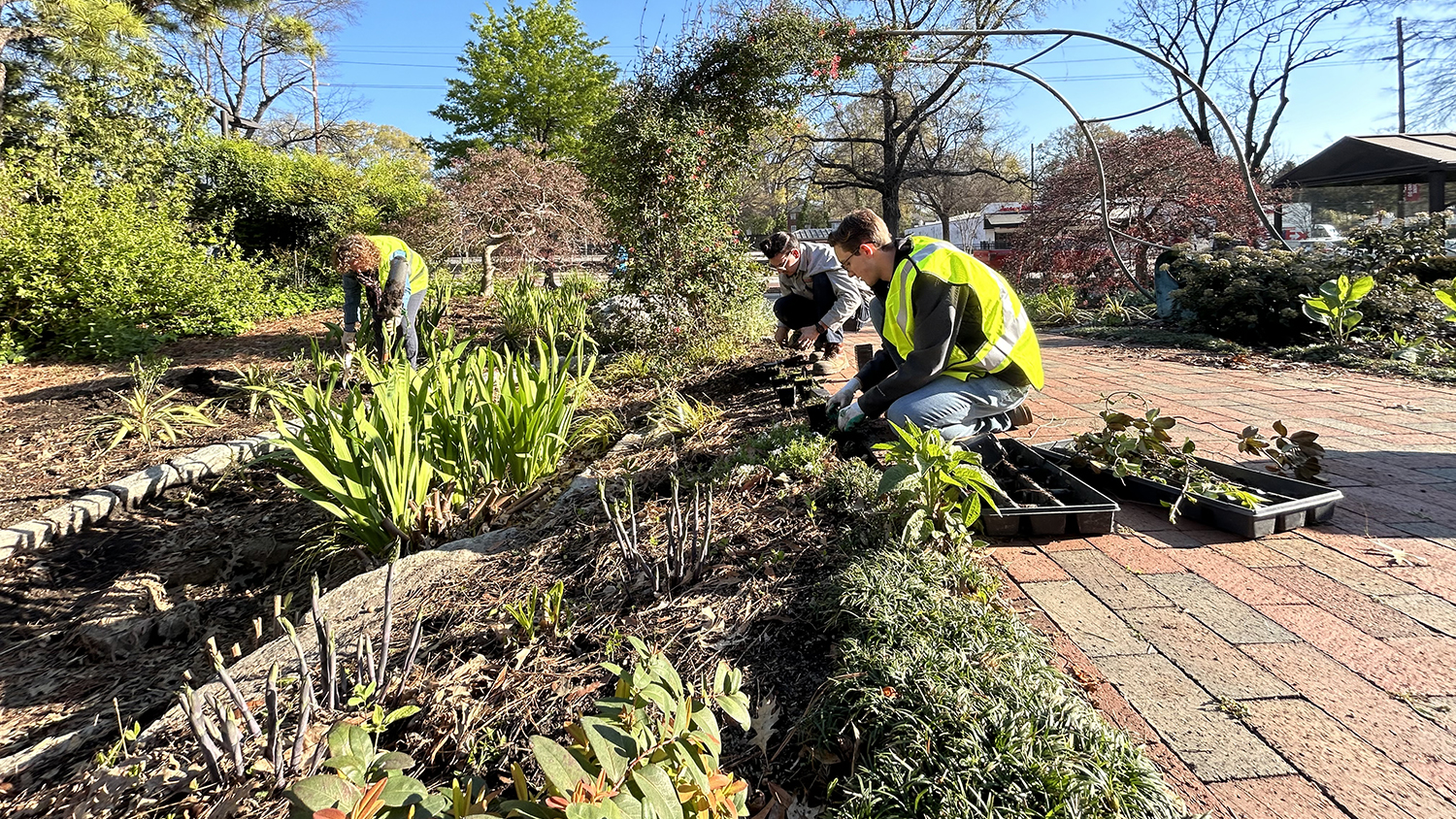Golden LEAF provides support for Christmas tree, hemlock research
Media Contact: Fred Hain, forest entomologist, N.C. State University, and chair of the Alliance for Threatened Forests, 919-515-3804 or fred_hain@ncsu.edu
A collaboration of scientists joining forces against the balsam and hemlock woolly adelgids, insects that threaten Fraser fir and eastern hemlock trees, respectively, recently got new ammunition. A $65,000 grant from the Golden LEAF Foundation will allow the scientists to start developing gardens of woolly adelgid-resistant trees.
Chaired by Dr. Fred Hain, forest entomologist at North Carolina State University, the Alliance for Saving Threatened Forests seeks to develop Fraser firs that are resistant to balsam woolly adelgid and eastern and Carolina hemlocks that are resistant to the hemlock woolly adelgid.
Fraser fir is the most popular Christmas tree in North Carolina. Although in the wild, balsam woolly adelgid kills mature Fraser fir, in nursery settings it attacks both young and old trees. Adelgids feed on the trunk, initially causing tree tops to curl and eventually causing death.
Christmas tree growers face economic losses every year to the balsam woolly adelgid, both in lost sales from unmarketable trees and in control costs. Currently, pesticides are the only effective control for balsam woolly adelgid.
Likewise, nurseries selling eastern hemlocks spend thousands of dollars on chemical control of hemlock woolly adelgid. Hemlock woolly adelgid can kill eastern hemlocks in only a few years.
Eastern hemlocks are considered a keystone species. The trees play an important role in mountain ecology and hydrology by providing habitat for birds and other animals, while the shade the trees cast helps keep streams cool.
Hain plans to provide Christmas tree and ornamental growers with another option — growing and selling trees that resist attacks by either pest. The Golden LEAF funding will allow him to start two “common gardens” of firs and hemlocks with proven resistance to the balsam or hemlock woolly adelgid.
One garden will be located in Waynesville at the Mountain Research Station; the other will be in Laurel Springs at the Upper Mountain Research Station.
Hain and his collaborators with the Alliance plan to screen several species of fir and hemlock —some native and some non-native — and use the genetic material from resistant varieties to begin breeding woolly adelgid-resistant trees. They plan to cross-breed with native trees to develop new North Carolina trees that will be resistant to the woolly adelgid.
The research not only will support the Christmas tree and ornamental industries but will also begin creating genetic stock for native plantings in the wild.
For more information about the Alliance for Saving Threatened Forests and its research on balsam and hemlock woolly adelgid, go to www.threatenedforests.com.
Written by: Rosemary Hallberg, communication specialist, Southern Region IPM Center, 919-513-8182 or rhallberg@sripmc.org


